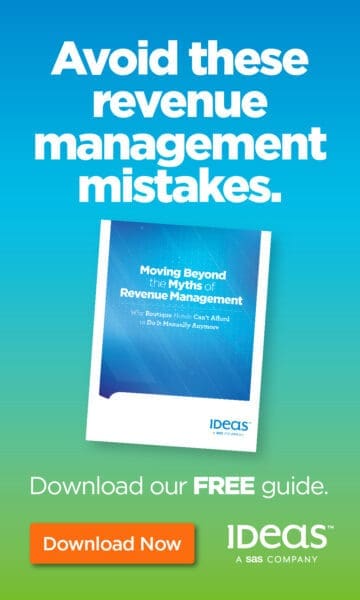
Every so often, a company will adopt new ideas, processes, and technologies. As a result, employees can find themselves needing valuable new skills to remain competitive and productive.
For this reason, many companies are seeing value in eLearning and online courses to fill their employee skill gaps. The workplace and many industries are and will change drastically in the near future.
For example, technological developments like automation show an increase in productivity and human-computer collaboration. In other sectors, you can see the effect of communications tools enabling employees to work from anywhere.
As technology continues to develop, companies will regularly find skill gaps that need closing. This article offers seven tips for choosing the right online course to fill yours.
1. Conduct a skills analysis
The first step in finding a suitable online course to fill a skill gap is recognizing the skills you currently possess. Conducting a skills analysis is beneficial as it enables you to realize your company’s strengths and weaknesses across different departments.
Pick skills to measure, rate them, and compare them across employees. This will give you a good idea of the performance of your teams. At a customer service center, employees could be proficient at using call disposition codes to label customer states. Conversely, you might uncover areas for improvement.
Consider your skills according to their importance to your company and future progression. Conducting a skills analysis can help you strategically plan toward filling a gap. Find your weaknesses, then develop your strategy.

2. Identify your goals
Knowing your vision and goals is more important now than ever. Rapid changes across industries mean many skill sets become outdated after a short period. Outline the direction your company is heading for the next year or two. Your business can strategize and plan steps to close its skill gap once it knows where it wants to be.
Where is your company going, and what resource does it need to thrive? What capabilities do your employees need to have in the coming year? For example, an eCommerce store may require marketers that are well versed in the latest eCommerce automation technologies and solutions.
Identify where your company is going, and you will pinpoint the skills necessary to get there.
3. Measure your skills gap
After determining the skills to be measured and your company’s goals, it’s time to assess your shortcomings. Rate the skills you want to measure. Compare them according to their importance to your goals. Find out which skills push you in the right direction and which skills need a little more focus.
Rate skills according to their importance and then conduct an evaluation. Look at skills across your employees and teams. These measurements will offer a clearer picture of your company’s performance capabilities and help you pick the areas to improve as a matter of urgency.
4. Consider what way work is trending
Many work-related trends catalyze changes to the way we do things. Today, many companies use a cloud communications platform. This tech has meant an increase in off-site and remote employees who don’t need to enter the workplace. Other trends include the use of automation for marketing and machine learning in warehouses.
Some changes necessitate an alteration in the logistics of working; others herald an increase in obsolete skills or a need to upskill. Your company must recognize skills that will be replaced by developing technology or new work trends in the near future, especially as replacing employees costs the equivalent of 6-9 months salary on average.
This means it’s easier and cheaper to upskill current employees than to hire a new recruit.
5. Set a training strategy
Now you know which skills your company needs, it’s time to look at ways to acquire them. Establishing a suitable upskilling strategy can be beneficial for all parties. The company can fill its skill gap and avoid shelling out on training new staff, while employees will enjoy these growth opportunities.
You should create a training strategy in line with work trends and expected skills that you’ll soon be lacking. This way, you can train staff in areas that will keep them engaged, excited, and productive.
For example, a marketer may require more in-depth technical knowledge about eCommerce automation because there is constant pressure to improve marketing performance, and automation tools help with this.
6. Research online courses
Many online resources will assist your employees with improving their skills and knowledge. Some will show team members how to record a phone call in a busy, high-speed office, while others will teach them how to build their first web page.
Everywhere you look, you will find online courses, so how can you know which ones are the best? By doing your due diligence!
Check if an online course is accredited. One incentive for undertaking an online course is accreditation. Employees will want to take a recognized training program that offers progression opportunities down the line.
Can students interact? Are there remote team-building activities built into the course? Can it be demoed before enrolling? If you can, sample the course so you can compare it to your company goals and see how well it suits them.
7. Use criteria to narrow your course search
By completing the previous six steps, your company can set criteria that align with your course requirements. This step will help the company to find the most suitable course for its skill gap and needs. For example, a telecommunications company might require more IT and app development skills to create a visual voicemail app.
Find a course that’s well designed, accredited by a school, and provides training on skills that will last beyond new developments. See if the teachers of the course have professional work and portfolios beyond the course they deliver.
A department seeking to manage a multi-channel strategy may look for an online course that helps to improve the customer experience. Remember, assess the course against your criteria before you make your selection.
Close your skill gaps
Fill your skill gaps to improve the performance of your employees, teams, and departments. Online classes offer valuable opportunities to upskill your workforce. Thanks to online videos, audio recordings, and interactive learning hubs, you can fill your skill gaps as and when you need to.
About the author
 Jenna Bunnell is the Senior Manager for Content Marketing at Dialpad, an AI-incorporated cloud-hosted contact center outsourcing and unified communications system that provides valuable call details for business owners and sales representatives. She is driven and passionate about communicating a brand’s design sensibility and visualizing how content can be presented in creative and comprehensive ways. Here is her LinkedIn.
Jenna Bunnell is the Senior Manager for Content Marketing at Dialpad, an AI-incorporated cloud-hosted contact center outsourcing and unified communications system that provides valuable call details for business owners and sales representatives. She is driven and passionate about communicating a brand’s design sensibility and visualizing how content can be presented in creative and comprehensive ways. Here is her LinkedIn.




























